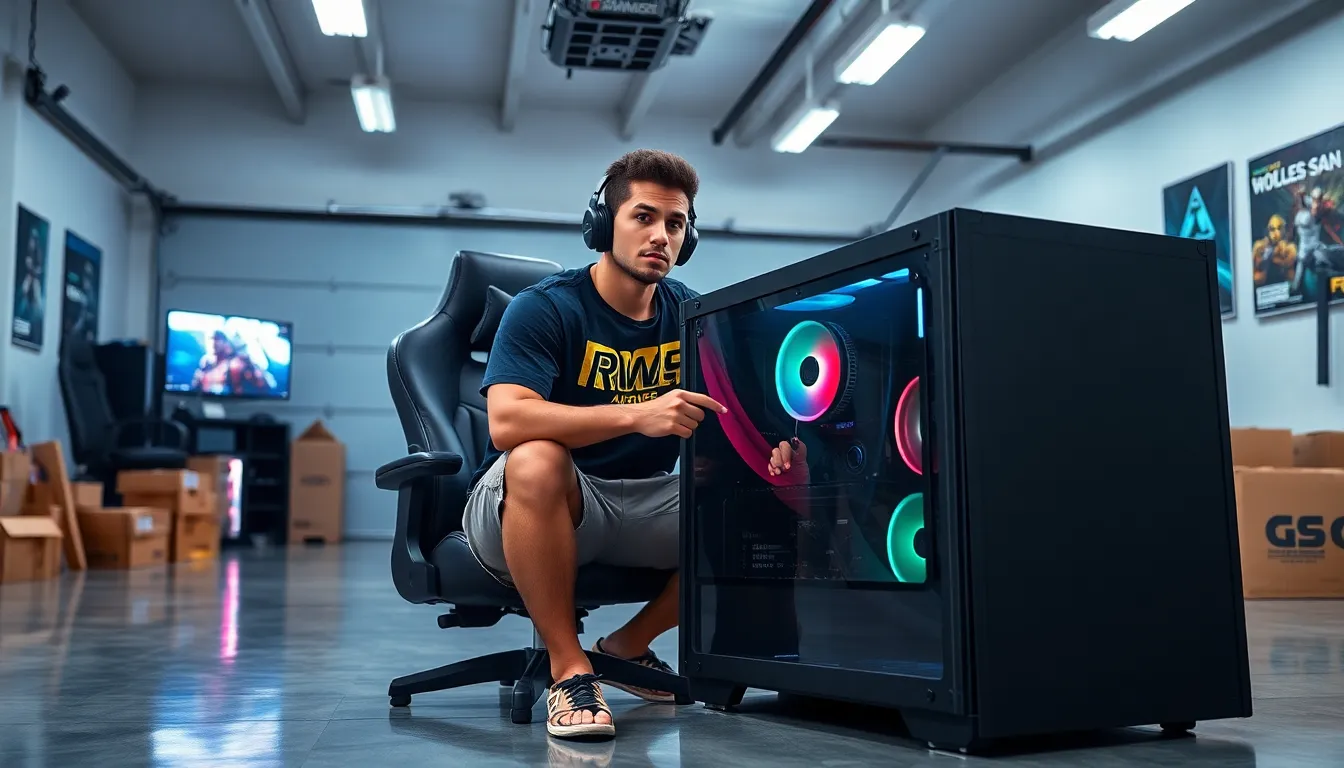Transporting a gaming PC can feel daunting, especially for serious gamers who have invested significant time and resources into creating their perfect setup. Whether you’re heading to a gaming convention, moving to a new home, or simply taking your rig to a friend’s place, understanding how to handle gaming PCs during transport can make all the difference. This article delves into the unique transportation needs of gaming PCs, the right methods for moving them, and best practices to ensure their safety and performance during travel.
Table of Contents
ToggleUnderstanding Gaming PC Transportation Needs

Gaming PCs are often hefty machines packed with delicate components like graphics cards, motherboards, and cooling systems. Unlike standard desktops, they can be far more intricate and require specific considerations when it comes to transportation. Factors such as fragility, size, and weight heavily influence how one should prepare and execute the transport. Knowing the specifications and value of one’s setup is crucial: after all, a gamer wouldn’t want to risk damaging a rig that’s been finely tuned for performance.
Also, the journey’s length and nature, whether it’s a quick drive across town or a long-distance move, can greatly impact how a gamer should approach their transport strategy. This understanding sets the stage for effective methods that keep gaming PCs safe and functional.
Choosing The Right Transport Method
Choosing the right transport method for a gaming PC involves more than just loading it into a vehicle. Here are crucial steps and considerations:
Packing Your Gaming PC For Safe Travel
- Disconnect All Components: Before packing, he should carefully unplug all peripherals, including keyboards, mice, headsets, and monitors. This not only protects them from damage but also makes it easier to fit everything into the vehicle or carrying case.
- Use Quality Packing Materials: Proper packing materials, such as anti-static bags for sensitive components and bubble wrap for added cushioning, can significantly reduce the risk of damage. He should ensure the PC is encased in a sturdy box, ideally the original packaging, as it’s designed for maximum protection.
- Secure the Interior Components: For longer journeys, securing internal components, particularly the GPU, is essential. Utilizing additional foam inserts can prevent any movement during transport, safeguarding against jarring impacts.
Essential Tools And Supplies For Transport
Aside from packing materials, consider these essential supplies:
- Duct Tape: Ideal for securing the box and protecting any loose wiring.
- Labels: To make the reassembly process easier, label all components and cables.
- Towels or Blankets: For extra protection, wrapping the PC or components in towels can cushion against shocks.
Best Practices For Traveling With Gaming Equipment
While packing is crucial, several best practices can enhance the travel experience:
- Temperature Control: Gaming PCs dislike extreme temperatures. When traveling, he should avoid leaving the PC in a hot or cold vehicle. If it’s an option, traveling with the PC in the passenger seat can help maintain a more stable temperature.
- Stability in Transit: Ensuring that the PC isn’t placed in a position where it could slide around is essential. The use of seat belts or securing it in place with soft items like blankets is recommended.
- Frequent Stops: During long travels, making frequent stops can help prevent overheating. He can allow the machine to cool down if it was in a hot environment.
Common Challenges When Transporting Gaming PCs
Moving a gaming PC, while manageable, presents unique challenges:
- Physical Damage: One of the most significant concerns involves physical damage from impacts or falls. Many gamers have witnessed heartbreak as they opened their transport cases only to find shattered glass panels or dislodged hardware.
- Static Electricity: Transporting electronic equipment increases the risk of static damage. It’s advisable to always use anti-static bags and avoid carpeting or highly charged environments during packing and unpacking.
- Component Compatibility: Once at the destination, ensuring that the gaming PC interacts well with different peripherals or monitors can be a headache. Always double-check compatibility before finalizing all connections.
Conclusion
Transporting a gaming PC doesn’t have to be a nerve-wracking experience. By understanding transportation needs, choosing appropriate methods, and adhering to best practices, gamers can ensure that their precious rigs remain safe and sound through their journeys. Whether it’s traversing across town or embarking on a more extended voyage, a thoughtful approach to packing and transportation will preserve the integrity of the setup and allow gamers to focus on what truly matters: enjoying their gaming experience wherever they are.
